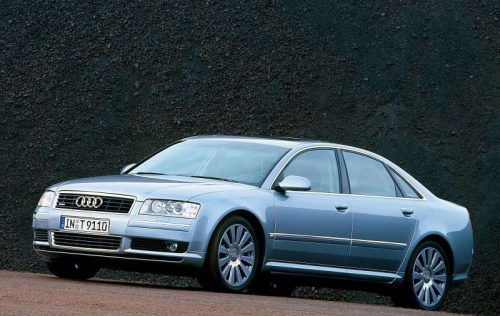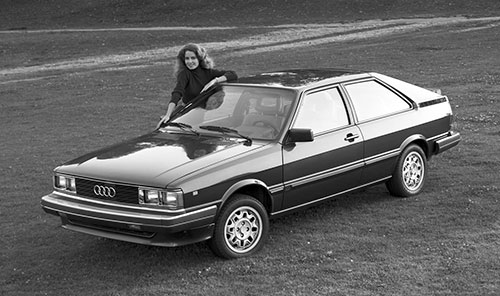
Over the past 14 years, the brand perception of these two German luxury automakers have followed decidedly different trajectories.
Note that I’m not talking about corporate profitability. Even as I make the case that Audi’s efforts at building and consolidating their brand image have far outstripped BMW’s, the latter remains a thoroughly successful company. I intend to focus more on brand perception, especially among nominally impartial enthusiasts like myself.
14 years ago, BMW was on a tear. Their primary lineup consisted of the E36 3-series, the sports sedan benchmark at the pinnacle of its development, the beautiful E39 5-series, arguably the best 5-series generation yet made, and the E38 7-series, a bold and powerful player in the high-end luxury sedan market. BMW’s offerings were built on the automaker’s core philosophy of RWD, highly-tuned non-turbo engines and a focus on driver involvement. Most significantly, BMW’s lineup was relatively small, and again, rested upon the automaker’s non-negotiables.
Audi, for its part, was still finding its footing, particularly in the US market. As Peter De Lorenzo summarizes in his excellent commentary on Audi’s most recent Le Mans triumph:
Audi was a perennial “second-tier” brand behind BMW, Mercedes-Benz and Lexus in the U.S. market, struggling to break out of the continuing funk that was the direct result of the hatchet-job performed by “60 Minutes” twelve long years before that (November 1986). The totally erroneous report by the CBS news program, which accused Audi of building vehicles that suffered from unintended acceleration, nearly put the brand out of business in this country – even though it was proven to be completely false – and it lingered over the car company like a shroud of negativity.
De Lorenzo points out that the Audi’s cars were fundamentally solid, if a step behind BMW’s in terms of enthusiast appeal, but the automaker’s brand perception needed rehabilitation.
Audi set about that task in a consistent, disciplined manner, focusing on appealing design, effectively applying technology developed through the automaker’s racing efforts to their production lineup, and most importantly, making intelligent product decisions and not overextending themselves into markets out of sync with the company’s brand focus. As a result, De Lorenzo writes:
Audi is now the forward thinking brand firmly ensconced at the head table of the luxury-performance segment. Boasting technically advanced and beautifully purposeful machines inside and out, Audi production cars bristle with brilliant, innovative ideas and are executed with a relentless precision. And they are beautiful to look at as well.
Meanwhile, from an enthusiast standpoint, BMW has squandered their carefully crafted brand image with an ill-fated foray into Formula 1, as well as dubious product decisions. Among others, they released the hideous Chris Bangle-designed E65 7-series, the frumpy X3 small SUV, the confusing X6 crossover and its downright baffling performance variant the X6 M, and the awkward 5-series GT midsize hatchback. The Bavarian automaker’s market experiments with alternative propulsion have been less than confident, the excellent 335d diesel-powered sports sedan notwithstanding. And BMW has suffered a succession of comparison test losses to its rival from Ingolstadt (A6 vs. 535i and S6 vs. M5) along with a shocking victory by the new Cadillac (!) ATS over the new F30 3-series in the key categories of chassis design and handling.
BMW’s performance benchmark the M3 is still a world-beater, demonstrating that in essentials, the automaker is still as good as it ever was, but the singular drive necessary to develop the M3 doesn’t seem to maintain itself throughout BMW’s lineup, and the brand is weakened. There’s expanding into untapped markets, and then there’s unfocused quasi-desperation, a quality BMW seems to be radiating of late. In the final analysis, as we look forward to 2013, BMW is offering less and less for enthusiasts to get excited about, and Audi’s lineup contains more and more.
The obvious response comes: Why should the corporate bean-counters at the helm of either company care what enthusiasts think? They run businesses, and if there are new opportunities, why not tap into them, brand history and consistency be damned? While that line of thinking has merit, consider the significance of branding to luxury and performance automakers in particular: In order to maintain brand image, a kind of above-the-fray certainty about product decisions must come through. A luxury or performance vehicle should sell itself, to a degree; its brand should shape popular trends, not chase them. In other words, it’s counterintuitive, but too much marketing is a sign customers aren’t beating a path to your door; they aren’t seeking you out like they should. And if nothing else, certainty was a quality BMWs exuded from their arrival here in the US market in the mid-’60s all the way through to the turn of the century. That confidence, coupled with a focus on capturing the enthusiast market, vaulted the automaker to its current place of prominence, and ever since 2000 or so BMW seems to be simply coasting on its brand capital while exploring every new market niche under the sun. No, the majority of its customers may not be enthusiasts, but many of them appreciate the opinions of enthusiasts when it comes to choosing a quality car; this is what drove the yuppie obsession with BMWs 30 years ago, and is important, I believe, for the brand’s continued appeal in the larger market. BMW needs to maintain its position as the enthusiast’s choice of luxury cars in order to sustain its brand image, and they simply cannot do that by exploring every last untapped market niche, as they seem intent on doing.
If the BMW emblem is to remain a beacon to car buffs like myself, the automaker needs to take a page from Audi’s playbook for the last 14 years: Recognize the brand’s traditional strengths and focus like a laser beam on those qualities while expanding the product line within that context, rather than distorting it out of all recognition.




























